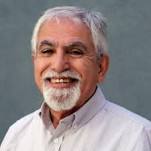IEEE Central Coast ZOOM Event - 15 July @ 6:30 PM – Professor Parhami Presents: "Recursive Synthesis of Digital Circuits: Advantages and Examples"
Hello Central Coast,
We are still relegated to the virtual world because of the reversal in “opening”. However, I am exploring possible outdoor venues for in-person events for August and September and beyond.
On July 15th, our own Professor Behrooz Parhami PhD will honor us with his talk, " Recursive Synthesis of Digital Circuits: Advantages and Examples" via Zoom meeting.
Link: https://ucsb.zoom.us/j/97082355848?pwd=MllINC9rU3VRRjFIMWIrMGt2TnMvUT09
Meeting ID: 970 8235 5848 Password: 735956
Please REGISTER BELOW to reserve your spot as usual and include an email address.
"See" you all on July 15th!
Ruth Franklin, IEEE Central Coast Chair
Date and Time
Location
Hosts
Registration
-
 Add Event to Calendar
Add Event to Calendar
Speakers
 Dr. Luke Theogarjan of UCSB ME
Dr. Luke Theogarjan of UCSB ME
Electronic Meets Biology
Biography:
Luke Theogarajan, PhD: Electrical Engineering & Computer Science, MIT (2007) is currently an Assistant Professor at UC Santa Barbara in Electrical and Computer Engineering. Before starting his Ph.D, he worked for Intel for five years where he was part of the Pentium 4 design team. He has published both in the field of electrical engineering and polymer chemistry and holds four patents.
Luke Theogarajan is interested in energy-efficient circuit architectures for computation and energy efficient materials for light-harvesting. He is currently collaborating with Institute Director John Bowers to design an energy-efficient electronic-photonic interconnect for multiprocessor communication. Dr. Theogarajan concurrently is working on novel light-harvesting polymers for a low-cost solution to designing luminescent solar concentrators (LSCs). LSCs offer a way to effectively couple highly efficient inorganic solar cells with organic dyes, lowering the cost.
